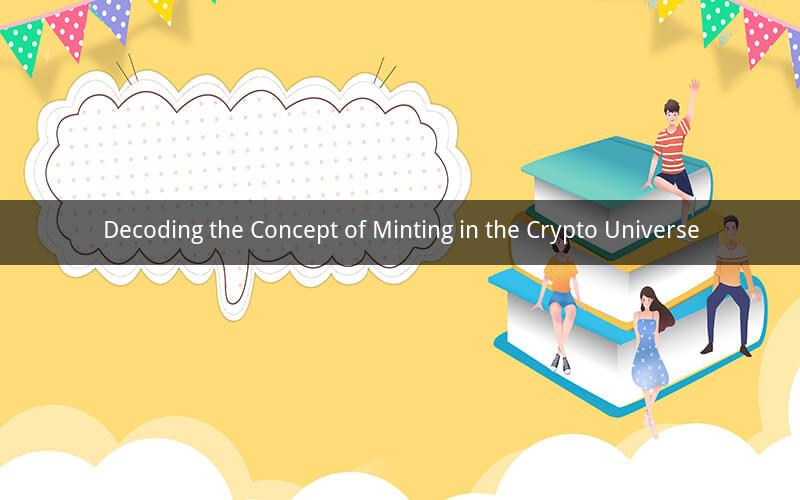
In the rapidly evolving world of cryptocurrencies, the term "minting" has gained significant attention. But what does it mean to mint in crypto? This article delves into the intricacies of minting, exploring its definition, significance, and applications in the crypto space.
What is Minting in Crypto?
Minting, in the context of cryptocurrencies, refers to the process of creating new digital assets. These assets can be tokens, coins, or any other form of digital currency. The process of minting is similar to the creation of new coins in traditional currencies, but it is performed through decentralized networks, primarily based on blockchain technology.
How does Minting Work?
The minting process varies depending on the specific cryptocurrency or blockchain platform. However, the general steps involved in minting are as follows:
1. Creation of a Smart Contract: The first step in minting is the creation of a smart contract. A smart contract is a self-executing contract with the terms of the agreement directly written into code. It is deployed on a blockchain platform and ensures that all parties involved adhere to the agreed-upon terms.
2. Verification of the Minting Process: Once the smart contract is created, it needs to be verified. This involves checking the code for errors and ensuring that it functions as intended. Verification can be done by developers or community members.
3. Mining or Staking: After the smart contract is verified, the minting process can begin. In Proof of Work (PoW) blockchains, minting is done through mining, where miners compete to solve complex mathematical puzzles to add new blocks to the blockchain. In Proof of Stake (PoS) blockchains, minting is done through staking, where validators are chosen to create new blocks based on their stake in the network.
4. Distribution of New Assets: Once a new block is created, the new assets are distributed to the relevant parties. In the case of token minting, the tokens are created and distributed to the token holders or the blockchain platform.
Significance of Minting in Crypto
1. Creation of New Digital Assets: Minting allows for the creation of new digital assets, which can be used for various purposes, such as transactions, investments, or as a store of value.
2. Decentralization: Minting is a decentralized process, which means that it is not controlled by any single entity. This ensures that the minting process is transparent and secure.
3. Inflation Control: In the case of PoW blockchains, minting helps control inflation by limiting the number of new coins created over time. This is done by adjusting the difficulty of the mining puzzles, making it harder or easier to create new coins.
4. Enhanced Security: The minting process is secure due to the blockchain's immutable nature. Once a new asset is minted, it cannot be altered or deleted, ensuring the integrity of the minting process.
Applications of Minting in Crypto
1. Token Creation: Minting is widely used for creating new tokens, which can represent ownership, access, or utility in various applications, such as decentralized finance (DeFi) projects, non-fungible tokens (NFTs), and more.
2. Stablecoins: Minting is also used to create stablecoins, which are cryptocurrencies designed to maintain a stable value relative to a fiat currency or a basket of assets.
3. Asset Backed Tokens: Minting can be used to create asset-backed tokens, which are digital tokens backed by real-world assets, such as real estate, commodities, or stocks.
4. Governance: In some blockchain platforms, minting is used to distribute governance tokens, which allow token holders to participate in decision-making processes.
Frequently Asked Questions (FAQs)
1. What is the difference between minting and mining?
- Minting is the process of creating new digital assets, while mining is the process of validating transactions and adding new blocks to a blockchain.
2. Can minting be reversed?
- No, minting is an irreversible process. Once a new asset is minted, it cannot be altered or deleted.
3. Is minting secure?
- Yes, minting is secure due to the blockchain's immutable nature. The minting process is transparent and cannot be altered without the consensus of the network.
4. Can anyone mint a cryptocurrency?
- In most cases, no. Minting is typically controlled by the blockchain platform or a designated entity. However, in some cases, anyone can mint a cryptocurrency by participating in the mining or staking process.
5. What are the risks associated with minting?
- The risks associated with minting include the potential for inflation, security vulnerabilities, and regulatory challenges. Additionally, the minting process can be resource-intensive, leading to high energy consumption and environmental concerns.